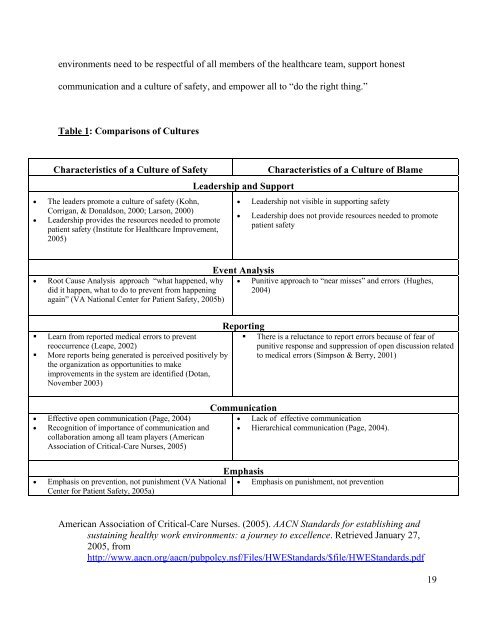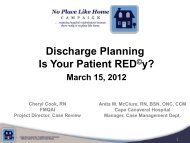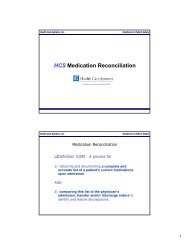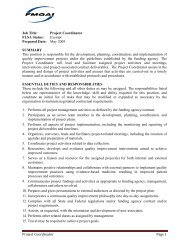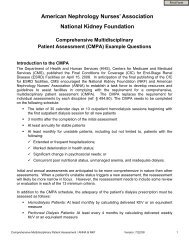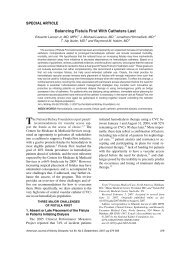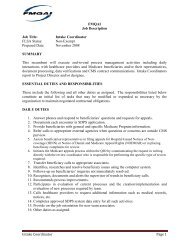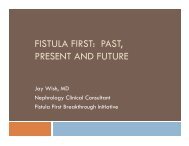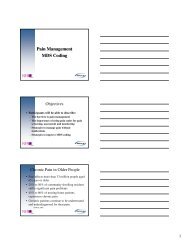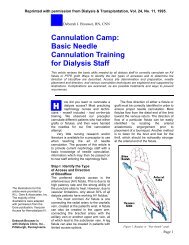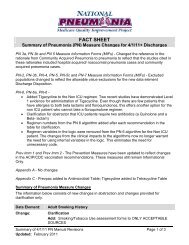The Nurse's Role in Promoting a Culture of Patient Safety - FMQAI
The Nurse's Role in Promoting a Culture of Patient Safety - FMQAI
The Nurse's Role in Promoting a Culture of Patient Safety - FMQAI
You also want an ePaper? Increase the reach of your titles
YUMPU automatically turns print PDFs into web optimized ePapers that Google loves.
environments need to be respectful <strong>of</strong> all members <strong>of</strong> the healthcare team, support honest<br />
communication and a culture <strong>of</strong> safety, and empower all to “do the right th<strong>in</strong>g.”<br />
Table 1: Comparisons <strong>of</strong> <strong>Culture</strong>s<br />
Characteristics <strong>of</strong> a <strong>Culture</strong> <strong>of</strong> <strong>Safety</strong> Characteristics <strong>of</strong> a <strong>Culture</strong> <strong>of</strong> Blame<br />
• <strong>The</strong> leaders promote a culture <strong>of</strong> safety (Kohn,<br />
Corrigan, & Donaldson, 2000; Larson, 2000)<br />
• Leadership provides the resources needed to promote<br />
patient safety (Institute for Healthcare Improvement,<br />
2005)<br />
• Root Cause Analysis approach “what happened, why<br />
did it happen, what to do to prevent from happen<strong>in</strong>g<br />
aga<strong>in</strong>” (VA National Center for <strong>Patient</strong> <strong>Safety</strong>, 2005b)<br />
Learn from reported medical errors to prevent<br />
reoccurrence (Leape, 2002)<br />
More reports be<strong>in</strong>g generated is perceived positively by<br />
the organization as opportunities to make<br />
improvements <strong>in</strong> the system are identified (Dotan,<br />
November 2003)<br />
• Effective open communication (Page, 2004)<br />
• Recognition <strong>of</strong> importance <strong>of</strong> communication and<br />
collaboration among all team players (American<br />
Association <strong>of</strong> Critical-Care Nurses, 2005)<br />
Leadership and Support<br />
• Leadership not visible <strong>in</strong> support<strong>in</strong>g safety<br />
• Leadership does not provide resources needed to promote<br />
patient safety<br />
Event Analysis<br />
• Punitive approach to “near misses” and errors (Hughes,<br />
2004)<br />
Report<strong>in</strong>g<br />
<strong>The</strong>re is a reluctance to report errors because <strong>of</strong> fear <strong>of</strong><br />
punitive response and suppression <strong>of</strong> open discussion related<br />
to medical errors (Simpson & Berry, 2001)<br />
Communication<br />
• Lack <strong>of</strong> effective communication<br />
• Hierarchical communication (Page, 2004).<br />
Emphasis<br />
• Emphasis on prevention, not punishment (VA National<br />
Center for <strong>Patient</strong> <strong>Safety</strong>, 2005a)<br />
• Emphasis on punishment, not prevention<br />
American Association <strong>of</strong> Critical-Care Nurses. (2005). AACN Standards for establish<strong>in</strong>g and<br />
susta<strong>in</strong><strong>in</strong>g healthy work environments: a journey to excellence. Retrieved January 27,<br />
2005, from<br />
http://www.aacn.org/aacn/pubpolcy.nsf/Files/HWEStandards/$file/HWEStandards.pdf<br />
19


